Introduction
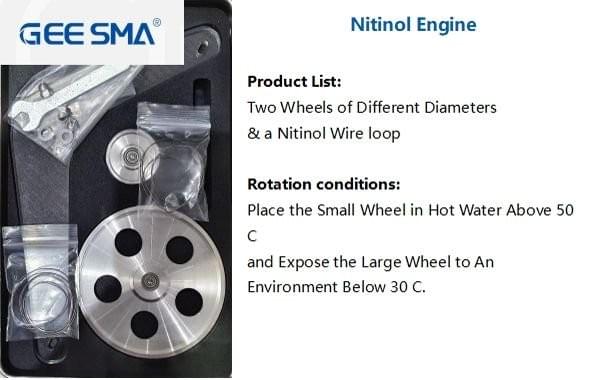
In the realm of advanced materials, few can rival the remarkable capabilities of nitinol wire, a standout among shape memory alloys. This extraordinary titanium metal exhibits a unique ability to return to its original shape after deformation, making it a game-changer in various precision applications. With its innovative properties and versatility, nitinol is not just a material—it's an engineering marvel that continues to redefine what's possible.
Nitinol Wire: The Shape Shifting Wonder
Nitinol wire is often hailed as the shape-shifting wonder due to its incredible ability to remember shapes under different conditions. Composed primarily of nickel and titanium, this shape memory alloy can transition between two distinct phases: martensite and austenite, depending on temperature changes. This fascinating behavior allows nitinol wire to perform tasks that traditional metals simply cannot match.
Why Precision Devices Rely on Nitinol
Precision devices across multiple industries rely heavily on nitinol for its unparalleled performance characteristics. The lightweight yet strong nature of this titanium material makes it ideal for applications where weight reduction is critical without sacrificing strength or durability. From medical implants to aerospace components, the reliability of nitinol wire ensures that these sophisticated devices operate flawlessly under demanding conditions.
The Science Behind Shape Memory Alloys
The science behind shape memory alloys like nitinol is rooted in their unique crystallographic structure and phase transformation properties. When heated above a certain temperature, the alloy transitions to its original form—an impressive feat that distinguishes it from standard nickel alloy or titanium alloy materials. Understanding these principles not only highlights why nitinol wire is essential in precision engineering but also opens doors for future innovations across various fields.
Understanding Nitinol Wire
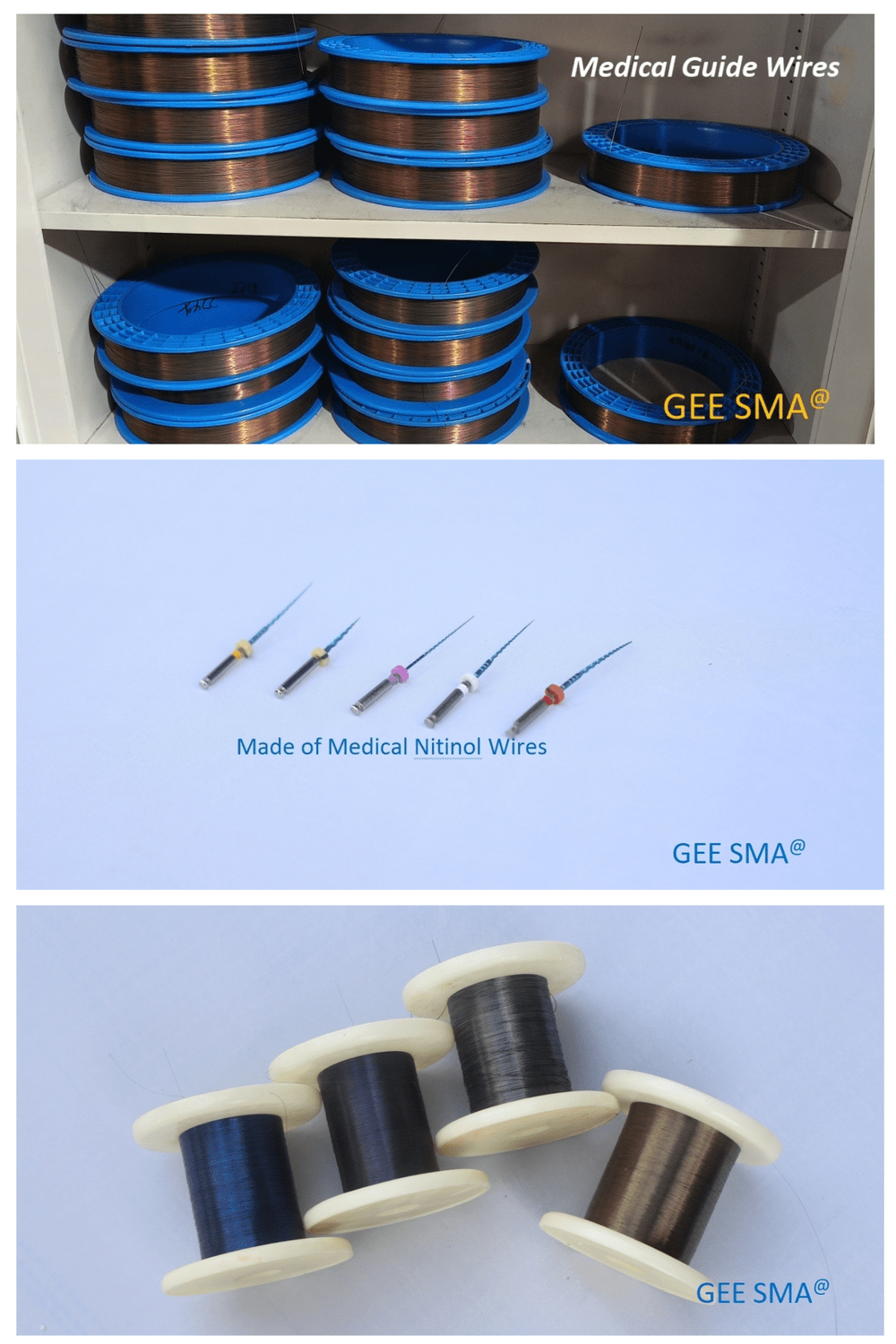
Nitinol wire is a fascinating material that has captivated engineers and scientists alike due to its extraordinary properties. This unique alloy, primarily composed of nickel and titanium, exhibits remarkable behavior known as the shape memory effect. When subjected to specific temperatures, nitinol wire can return to a predetermined shape after being deformed, making it a standout among shape memory metals.
What is Nitinol and How it Works
Nitinol is an innovative alloy made up of approximately 50% nickel and 50% titanium metal, which gives it its distinctive characteristics. The magic lies in its ability to undergo phase transformations between two different crystal structures: austenite and martensite. When heated above a certain temperature, nitinol wire transforms into its original austenite form, allowing it to spring back from any deformation—a property that makes it invaluable in various applications.
Understanding how nitinol works helps illuminate why it's often chosen over traditional titanium alloys or nickel alloy materials for precision devices. Its unique phase transformation enables precise control over movement in medical devices like stents or guidewires. This capability not only enhances functionality but also improves patient outcomes by ensuring devices operate as intended within the human body.
The Unique Properties of Shape Memory Alloys
Shape memory alloys (SMAs), including nitinol wire, are renowned for their ability to remember shapes due to their reversible phase transitions under varying temperatures. One of the most exciting properties of these alloys is their superelasticity; when stretched beyond their elastic limit at higher temperatures, they can return to their original form without permanent deformation. This exceptional characteristic makes them particularly useful in applications where flexibility and resilience are paramount.
Moreover, nitinol wire boasts excellent fatigue resistance compared to standard titanium materials or nickel alloys, allowing it to endure repeated stress without failure—an essential quality for components used in dynamic environments like robotics or aerospace applications. The lightweight nature of nitinol also contributes significantly to performance improvements across various industries while maintaining strength comparable to heavier metals.
These unique properties position shape memory alloys as game-changers in fields ranging from medicine to engineering. By harnessing the capabilities of SMAs like nitinol wire, manufacturers can create innovative solutions that meet stringent demands while pushing the boundaries of what's possible with traditional materials.
Comparison with Titanium and Nickel Alloys
When comparing nitinol wire with conventional titanium metal and nickel alloy materials, several key differences emerge that highlight why nitinol stands out as a superior choice for many applications. Traditional titanium alloys are known for their strength-to-weight ratio but lack the unique properties associated with shape memory metals like nitinol—specifically the ability to revert back after deformation or exhibit superelasticity under stress.
On the other hand, while nickel alloys provide excellent corrosion resistance and toughness, they do not possess the same transformative capabilities as shape memory alloys do when subjected to temperature changes or mechanical stressors. Nitinol’s combination of lightweight design coupled with high strength makes it an ideal alternative for industries requiring precision-engineered components without sacrificing durability.
Applications in Precision Devices
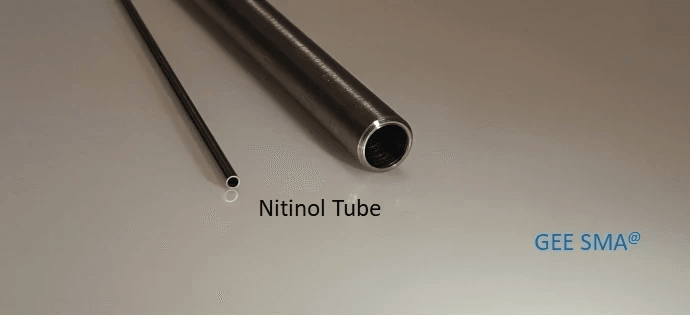
Nitinol wire, the shape-shifting marvel of modern engineering, has found its niche in various precision devices. From the intricate world of medical devices to the soaring heights of aerospace innovations and the nimble movements in robotics, this unique shape memory alloy is making waves. Let’s dive into how nitinol wire is transforming these industries with its exceptional properties.
Medical Devices: Stents and Guidewires
In the medical field, nitinol wire is a game-changer, particularly in the production of stents and guidewires. Its remarkable ability to return to a predetermined shape when heated makes it ideal for minimally invasive surgeries; doctors can easily navigate complex pathways within the body without causing damage. The flexibility and strength of this titanium material ensure that medical devices are not only effective but also reliable for patient care.
Stents made from nitinol wire expand seamlessly within arteries, providing critical support where it's needed most. This shape memory alloy adapts to varying conditions within the body, offering a tailored solution that traditional materials like nickel alloys simply can't match. With its lightweight yet durable properties, nitinol outshines other titanium alloys, ensuring patients experience less trauma during procedures.
Moreover, guidewires crafted from this innovative titanium metal allow for precise navigation through blood vessels or other bodily structures. Their superior fatigue resistance ensures that they maintain their integrity even after numerous uses—an essential feature for any device used in delicate operations. As medical technology advances, nitinol's role will only grow more significant.
Aerospace Innovations: From Chang’e to Tianwen
The aerospace industry has also embraced nitinol wire for its unique capabilities, especially in missions like Chang’e and Tianwen—China's ambitious lunar exploration projects. Here, shape memory metals are utilized to create deployable structures that can withstand extreme temperatures and pressures encountered during flight and landing phases. The adaptability of this titanium material allows engineers to design components that perform reliably under varying conditions.
In spacecraft design, components made from nitinol alloy can change shapes as needed without sacrificing structural integrity or performance efficiency. For example, antennas or solar panels can be compactly stored during launch but expand perfectly once deployed in space—a feat made possible by this extraordinary shape memory alloy technology. The lightweight nature of nitinol wire further enhances fuel efficiency while maintaining robust functionality throughout missions.
Additionally, advancements in aerospace engineering often focus on reducing weight while increasing strength; here again, nitinol shines compared to conventional nickel alloy materials or even other titanium alloys available on the market today. As we push boundaries into new frontiers like Mars exploration or beyond Earth’s orbit with projects such as Tianwen-1’s mission to Mars’ surface—nitinol's potential seems limitless.
Robotics: How Nitinol Enhances Performance
Robotics is another field where nitinol wire has carved out an impressive reputation due to its remarkable mechanical properties and versatility as a shape memory alloy. Engineers leverage these characteristics when designing actuators capable of mimicking human-like movements with precision and agility—a crucial requirement for advanced robotics applications ranging from prosthetics to drones used in logistics or surveillance missions.
When integrated into robotic systems, nitinol wires can contract or expand based on temperature changes; thus enabling smooth movements without bulky motors or complex mechanisms typically required by traditional designs using nickel alloys or standard titanium materials alone! This innovation results not only in lighter robots but also enhances their overall performance by improving energy efficiency—an essential factor given today’s emphasis on sustainability across industries.
Furthermore, as robotics continues evolving toward more sophisticated applications such as soft robotics—where flexibility plays an integral role—the use of high-quality shape memory metals like those produced by GEE SMA becomes increasingly relevant! By harnessing these cutting-edge technologies derived from advanced titanium alloys combined with innovative manufacturing processes—we're setting ourselves up for a future filled with possibilities previously thought unattainable!
GEE SMA: A Leader in Nitinol Production

Crafting High-Quality Shape Memory Alloys
GEE SMA employs advanced techniques to ensure that its shape memory alloys meet the highest standards of quality and performance. The nitinol wire produced by GEE SMA exhibits remarkable properties such as superelasticity and shape memory effect, making it ideal for critical applications in medical devices and aerospace technology. By utilizing state-of-the-art manufacturing processes, they create titanium metals that are not only reliable but also versatile enough to meet diverse industry needs.
Tailoring Materials for Specific Applications
Understanding that different applications require unique specifications, GEE SMA excels at tailoring its nitinol wire to suit specific customer demands. Whether it's creating specialized titanium alloys or adjusting the composition of nickel alloy materials, their expert team is dedicated to providing solutions that enhance performance across various sectors. This custom approach ensures that clients receive precisely what they need, whether it's for robotic components or intricate medical devices.
Custom Solutions for Unique Customer Needs
GEE SMA prides itself on offering custom solutions designed around the unique requirements of each client. They recognize that one size does not fit all when it comes to shape memory metals; hence, flexibility is key in their production process. By collaborating closely with customers, GEE SMA delivers tailored nitinol wire solutions that push the boundaries of innovation while ensuring optimal functionality.
Benefits of Using Nitinol Wire
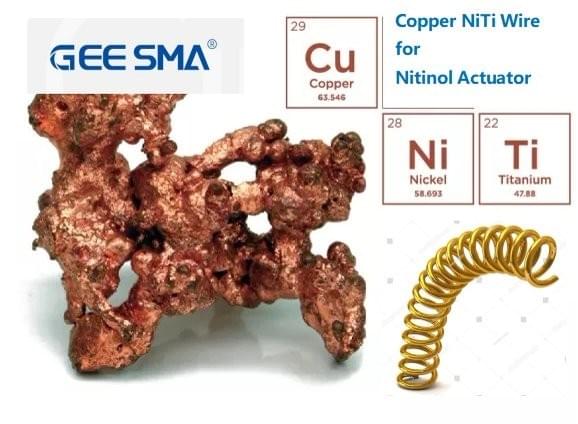
Nitinol wire is a remarkable material that combines lightweight properties with impressive strength, making it an ideal choice for various applications. Unlike traditional titanium alloys or nickel alloy materials, nitinol, a shape memory alloy, offers unique advantages that enhance performance in precision devices. Its ability to return to a predetermined shape after deformation not only showcases its strength but also opens doors for innovative designs across multiple industries.
Lightweight Yet Strong: An Ideal Titanium Material
Nitinol wire stands out as an exemplary titanium material due to its lightweight nature while maintaining exceptional tensile strength. This characteristic allows engineers to design more efficient devices without compromising structural integrity, making nitinol a preferred choice over conventional titanium alloys and nickel alloy materials.
Exceptional Fatigue Resistance and Durability
One of the standout features of nitinol wire is its exceptional fatigue resistance, which is vital in applications where repeated stress occurs. Unlike many other metals, including some titanium alloys and nickel alloys, nitinol exhibits remarkable durability under cyclic loading conditions. This means that products made from nitinol can endure rigorous use without succumbing to wear and tear, ensuring they remain reliable over time.
Versatility Across Various Industries
The versatility of nitinol wire extends beyond medical applications; it's making waves in aerospace and robotics too! As a shape memory metal, it can be engineered for diverse functions across multiple sectors—from creating stents in healthcare to enhancing robotic actuation systems in manufacturing. The adaptability of this titanium material allows industries to innovate continuously while leveraging the unique properties of shape memory alloys like nitinol.
Future Trends in Nitinol Applications

As we peer into the future of technology, nitinol wire continues to emerge as a game-changer across various sectors. The versatility of this shape memory alloy means that it is not only here to stay but will likely become more integral in applications that require precision and reliability. With ongoing research and development, we can expect nitinol to play a pivotal role in shaping the future of both medical and aerospace technologies.
Emerging Technologies in Medical and Aerospace
In the medical field, emerging technologies are increasingly leveraging nitinol wire for innovative solutions like minimally invasive surgeries and advanced prosthetics. The unique properties of shape memory alloys allow for devices that can adapt to the body's needs, enhancing patient outcomes through less invasive procedures. Similarly, in aerospace, the lightweight yet strong characteristics of titanium material combined with nitinol create opportunities for more efficient spacecraft designs that withstand extreme conditions while maintaining structural integrity.
The integration of nitinol wire into these sectors is also paving the way for smart devices equipped with sensors that respond dynamically to environmental changes. This adaptability is crucial for both medical implants and aerospace components where real-time functionality can mean the difference between success and failure. As research progresses, we anticipate a surge in hybrid systems utilizing both titanium alloys and shape memory metals to achieve unprecedented performance levels.
The Role of Nitinol in Advancements of Robotics
Robotics is another arena where nitinol’s distinctive properties are making waves, particularly when it comes to actuation mechanisms. Shape memory alloys like nitinol wire offer unique advantages such as compactness and energy efficiency, allowing robots to perform complex tasks with minimal power consumption. As industries adopt automation at an unprecedented rate, incorporating these materials could lead to lighter robots that still pack a punch when it comes to strength.
Moreover, advancements in soft robotics are heavily reliant on materials like nitinol due to their flexibility and ability to return to original shapes after deformation—ideal traits for creating adaptable robotic systems designed for intricate tasks or sensitive environments. The incorporation of titanium metal further enhances these capabilities by providing durability while keeping weight low, essential for mobile robotic applications. Expect collaborations between engineers focusing on integrating nickel alloy materials into robotic designs alongside traditional titanium alloys as they strive toward smarter machines.
Sustainability and Innovations in Titanium Alloys
Sustainability is becoming an increasingly important factor across all industries; thus innovations surrounding titanium alloys are gaining traction as well. By focusing on recycling processes for titanium metal and exploring new manufacturing techniques using shape memory metals like nitinol wire, companies aim not only at reducing waste but also at improving product lifecycle management significantly. This shift towards sustainable practices highlights a growing awareness within industries about their environmental impact.
Additionally, there’s an increasing interest in developing new nickel alloy materials that complement existing titanium alloys while maintaining high performance standards under various conditions—think lightweight yet robust solutions perfect for everything from automotive applications to renewable energy technologies! By combining sustainability with cutting-edge advancements in metallurgy, we’re looking at a future where innovation doesn’t come at the expense of our planet’s health.
Conclusion
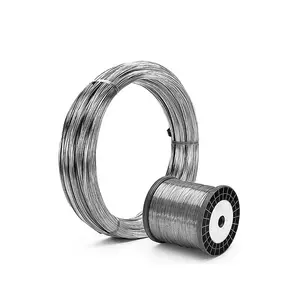
In the ever-evolving world of precision engineering, nitinol wire stands out as a game-changer. Its unique properties as a shape memory alloy allow it to return to predetermined shapes when subjected to specific temperatures, making it indispensable in various applications. The reliability and versatility of nitinol wire not only enhance performance but also ensure safety across industries, from medical devices to robotics.
Why Nitinol Wire is Essential for Precision
The precision offered by nitinol wire stems from its remarkable ability to undergo phase transformations, enabling it to perform complex tasks with minimal input. This characteristic makes it an ideal titanium material for applications where accuracy is paramount, such as in surgical stents and guidewires. Furthermore, compared to traditional nickel alloy materials or even titanium alloys, shape memory metals like nitinol provide unparalleled adaptability and resilience under stress.
The Influence of GEE SMA on the Industry
GEE SMA has emerged as a leader in the production of high-quality shape memory alloys, setting benchmarks that others strive to meet. Their commitment to crafting tailored nitinol wire and other titanium metal solutions ensures that industries can access materials specifically designed for their unique challenges. By pushing the boundaries of what titanium material can achieve, GEE SMA has significantly influenced advancements in sectors ranging from aerospace innovations to cutting-edge robotics.
Looking Ahead: Nitinol’s Expanding Possibilities
The future looks bright for nitinol wire as emerging technologies continue to unlock new applications across various fields. With ongoing research into sustainable practices and enhanced performance metrics for titanium alloys and shape memory metals, we can expect even more innovative uses on the horizon. As industries evolve and seek more efficient solutions, the role of nitinol wire will undoubtedly expand, solidifying its place at the forefront of precision engineering.

